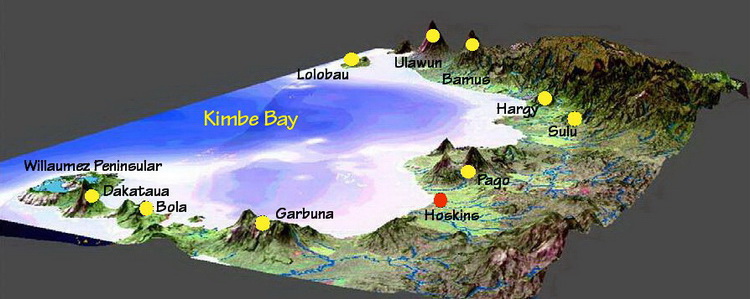There is a line of thought in the scientific community that this is where it all began and the first corals originated… a large sheltered bay, roughly one third along the north coast of the island now called New Britain.
The bay is called Kimbe and the country is Papua New Guinea — the wild and exciting nation crafted together in colonial times from the eastern half of the huge island of New Guinea and a string of other islands stretching out in to the Bismarck and Solomon Seas.
Surveys have shown that Kimbe Bay is host to around 860 species of reef fish, 400 species of coral and at least 10 species of whales and dolphins. To put that in a global perspective — in an area roughly the same as California, PNG is home to about 5% of the world’s marine biodiversity.
Just under half of those fish and virtually all of the coral species can be found in Kimbe Bay, which means that the bay can be considered as a kind of fully stocked marine biological storehouse.
X-Ray dive magazine has just published a 10 page article of mine that documents the incredible diving in Kimbe Bay and the extensive efforts being made to protect and conserve it.
You can download the article on this link to Papua New Guinea, Kimbe Bay – The Coral Crucible
Diving PNG: Location Guides
Papua New Guinea is one of my favorite locations in the Indo-Pacific region and I have been there many times. It’s a big country with lots of places to dive and I have been able to document most of them in my extensive Location Guide here on this site – probably the most complete guide to diving PNG there is.
You will find lots of general information on the country starting with my Understanding Papua New Guinea page – or check out the links from the sidebar on this page.
If you have a specific question about scuba diving in Kimbe Bay or Papua New Guinea you can use the Contact page to send me an email.
The post The Coral Crucible appeared first on Indo-Pacific Images.

